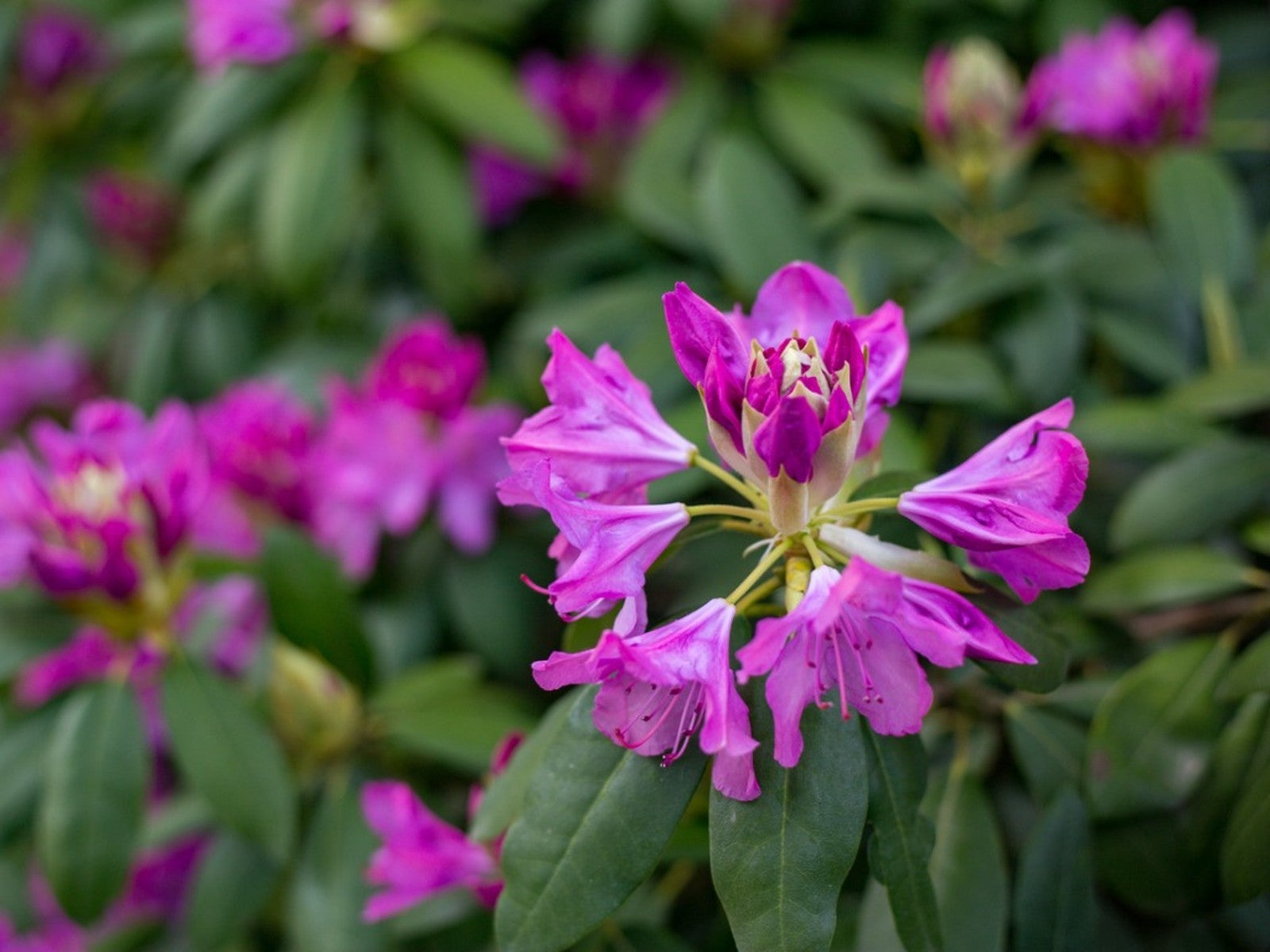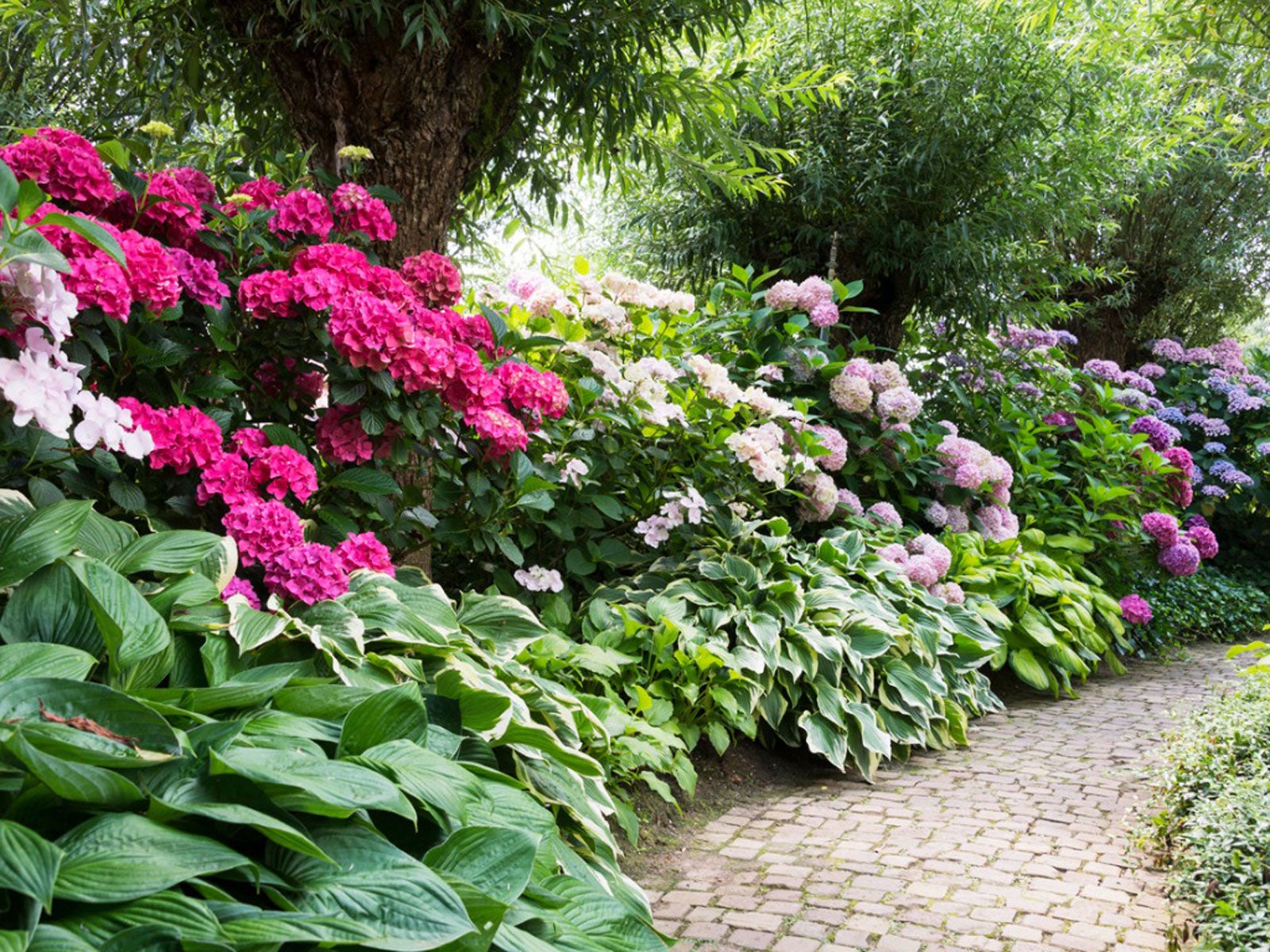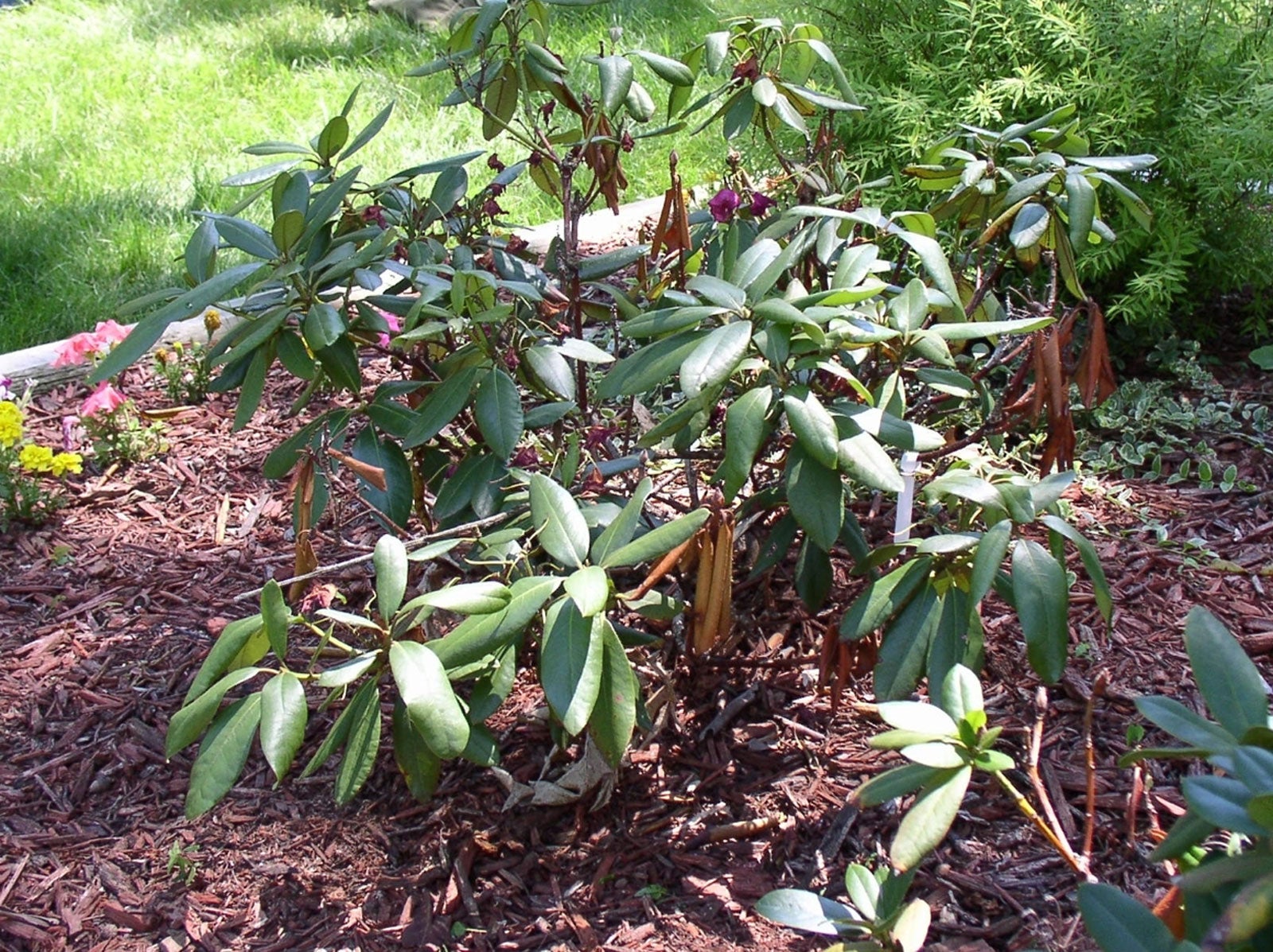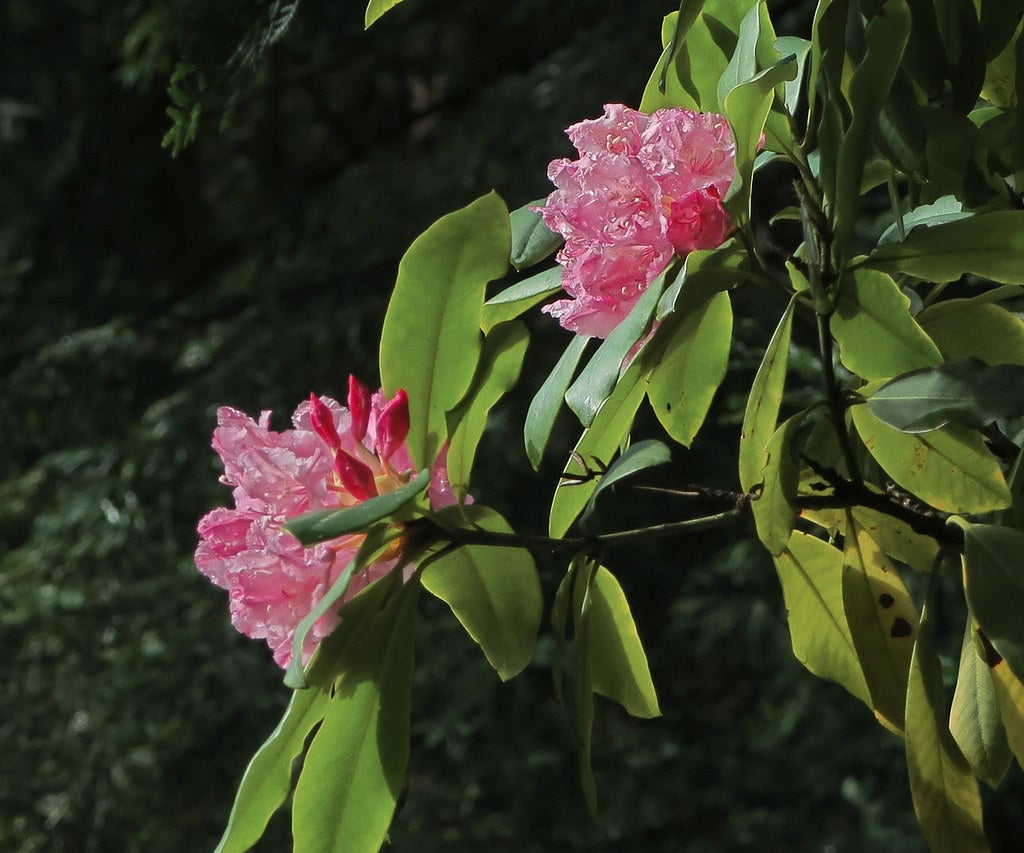Pruning Rhododendrons - How To Prune Rhododendrons


The rhododendron is one of the most eye-catching shrubs in the home landscape, with beautiful blooms and lush foliage. Being popular shrubs in many landscapes, the topic of how to trim a rhododendron bush, including wild varieties like mountain laurel, is a frequently asked question.
Pruning Rhododendron Guide
Although there is often little need for pruning rhododendrons, especially in naturalized settings, these shrubs respond well to the occasional trimming. In fact, excessive growth may require a heavy pruning.
Trimming rhododendrons is typically done for maintenance, shaping, and rejuvenation-- as is the case for overgrown plants. The most common type of pruning is maintenance pruning, which simply involves the removal of spent flowers and old, dead wood.
It is important to remove the flower stems from the shrub once blooming has ceased. Allowing these dead flower clusters to remain can actually reduce the following year's flowering.
Cut near the base of the old flower cluster. Also, remove dead or diseased parts of the shrub, following the branch back to healthy wood and making your cut at that point.
Best Time for Trimming Rhododendrons
According to most professional landscapers, the ideal time for pruning rhododendrons is late winter, while the plant is dormant. However, any time between the first frost in fall and the last frost in spring (while the sap is low) will work. Immediately following its lush spring growth, as new foliage is still hardening off, is one of the worst times for trimming rhododendrons. This will likely inhibit blooming.
How to Prune Rhododendrons
If you are considering pruning, you should probably plan to fertilize your shrub in late fall the year before. Doing so afterward may result in leggy growth. Since buds form on next year's flowers, by the time blooming has stopped, they are already well advanced.
Gardening tips, videos, info and more delivered right to your inbox!
Sign up for the Gardening Know How newsletter today and receive a free copy of our e-book "How to Grow Delicious Tomatoes".
Therefore, as the flowers fade, trim no more than 15 to 20 inches (38-51 cm.) off the strongest branches. Cut back the plant to expose the inner branches. Follow the branch down to the last whorl of leaves you want to keep and cut just above those leaves, about 1/4 inch (6 mm.) above the topmost leaf in this cluster.
Large, overgrown rhododendrons can be cut 12 to 15 inches (31-38 cm.) from the ground when necessary. Rhododendrons often have three or more main branches rising from the crown of the plant. Each of these primary branches should be cut at a different height to produce a more natural-looking shrub.
Cut about 1/2 to 3/4 of an inch (1-2 cm.) just above a latent bud. Pruning above a cluster of two or three buds is even better. Sometimes more severe pruning may be necessary, requiring cutting to about 6 inches (15 cm.) or so from the ground.
Their adventitious buds at the base of the plant will send up new shoots, but keep in mind that flowering usually will not occur for up to two or three years after this heavy pruning.

Nikki Tilley has been gardening for nearly three decades. The former Senior Editor and Archivist of Gardening Know How, Nikki has also authored six gardening books.
-
 How To Make A Bouquet Garni Or Herb Bundle For Cooking
How To Make A Bouquet Garni Or Herb Bundle For CookingIf you’re a great cook, you may have made an herb bundle before. If this is a new idea, learn how to add sparkle and interest to your dish with a bouquet garni.
By Amy Grant
-
 ‘Coral Charm’ Peony Care For Sublime Semi-Double Peonies With Lush Salmon Pink Flowers
‘Coral Charm’ Peony Care For Sublime Semi-Double Peonies With Lush Salmon Pink FlowersPeonies are known for their soft baby pink or magenta tones, but if plushy coral blooms are your thing, here’s our guide to the ultimate ‘Coral Charm’ peony care
By Tonya Barnett
-
 How Curling Leaves On Rhododendrons Act Like A Thermometer
How Curling Leaves On Rhododendrons Act Like A ThermometerRhododendron leaves curling and drooping in winter? Read about thermotropic leaf movements.
By Teo Spengler
-
 What Is Lapland Rhododendron
What Is Lapland RhododendronWhat is a Lapland rhododendron? More difficult to grow than a garden rhody, this creeping groundcover is a prized wild specimen. Click for more.
By Tonya Barnett
-
 Fragrant Rhododendron And Azalea Varieties
Fragrant Rhododendron And Azalea VarietiesMany rhododendrons and azaleas are exceptionally fragrant. Here are five of our favorite scented azalea and rhododendron varieties.
By Tonya Barnett
-
 Pink Rhododendron Varieties: Picking The Perfect Pink Rhododendron
Pink Rhododendron Varieties: Picking The Perfect Pink RhododendronThere are more than 1,000 species of rhododendron, so if pink is your favorite, there are plenty to choose from. Click to learn about pink rhododendrons.
By Mary Ellen Ellis
-
 Companions For Azaleas And Rhododendrons: What To Plant With Rhododendron Bushes
Companions For Azaleas And Rhododendrons: What To Plant With Rhododendron BushesRhododendrons and azaleas make beautiful landscape plants but require specific growing conditions. Learn what to plant with azaleas and rhododendrons here.
By Laura Miller
-
 Burnt Rhododendron Leaves: Environmental Leaf Scorch On Rhododendrons
Burnt Rhododendron Leaves: Environmental Leaf Scorch On RhododendronsBurnt rhododendron leaves are most likely due to unfavorable environmental and weather conditions. Learn more about environmental leaf scorch here.
By Mary Ellen Ellis
-
 Pacific Rhododendron Care – How To Grow A Pacific Rhododendron
Pacific Rhododendron Care – How To Grow A Pacific RhododendronUsing Pacific rhododendron plants as part of natural landscaping provides eye-popping blooms combined with ease of care. These wild plants are very adaptable and versatile. Click here for tips on how to grow a Pacific rhododendron in your garden.
By Bonnie L. Grant
-
 Rhododendron Container Care: Growing Rhododendrons In Containers
Rhododendron Container Care: Growing Rhododendrons In ContainersWhile usually grown as shrubs, rhododendrons can get very big. They can also go the other direction and be grown as small, manageable plants in containers. Learn more about how to care for rhododendrons in pots in this article.
By Liz Baessler